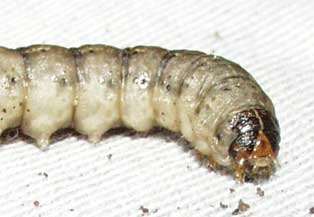Late planted fields may benefit from a herbicide application
By Diego Flammini
Assistant Editor, North American Content
Farms.com
Ontario’s winter wheat crop continues its satisfactory growth, according to the OMAFRA Field Crop Team’s recent Field Crop Report.
And the frost on the mornings of May 8 and 9 appear to have done little damage to the crops.
A number of producers are waiting to complete their second nitrogen application but may want to hold off on herbicide applications.
“At this point in time, there is marginal benefit to applying herbicides to the wheat crop,” the Field Crop Team said in its report. “Winter annuals have already impacted the crop and most perennial weeds (sow thistle) are not fully emerged.”
Septoria leaf spot and powdery mildew have appeared in some fields. Producers and crop scouts have found wheat streak mosaic virus in Huron County and stripe rust in Oxford and Essex Counties.

Septoria leaf spot
Photo: OMAFRA
“…it is important to continue scouting to determine if fungal disease infection is progressing up the plant (especially on susceptible varieties) and is critical to determine if a fungicide application is needed and at what timing,” OMAFRA said.
Corn
Heavy rainfall in early May means corn planting remains delayed.
Farmers may find themselves itching to get the crop in the ground despite unideal field conditions but that could be costly, says OMAFRA.
Farmers should “keep in mind what happened last year when corn was planted wet and the rain stopped. Roots couldn’t penetrate the side wall compaction and the slot opened up, exposing the seed.”
Producers concerned with black cutworm should delay planting by two to three weeks after a burndown, causing the young larvae to starve. But the wet conditions make it difficult to perform a burndown.

Black cutworm larvae
Photo: OMAFRA
“Take note of those fields planted shortly after burndown and plan to scout for leaf feeding and cutting injury every three to four days, once the crop emerges until it is safely past the V4 stage,” OMAFRA said in its report.
Canola
Early canola planting is recommended to avoid Swede Midge infestations but wet fields are making it difficult to plant.
“Ideally, the crop should be planted by May 20,” says OMAFRA. “Crop insurance planting deadlines range from May 31 to June 10, depending on location.”